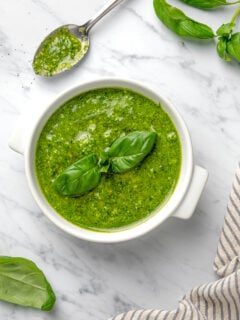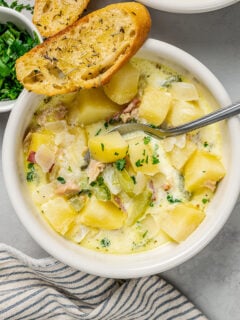Fresh, bold, and simple, this is my favorite Basil Pesto Recipe. It’s loaded with garden-fresh basil, good olive oil, garlic, and pine nuts. You’ll want to serve it with everything!

A Must-Have Recipe for Classic Basil Pesto
If you grow basil in your garden, then you probably have an overflow of this leafy herb once or twice a year. Basil is prolific, to the point that I’ve started fighting mine from going to seed (producing flower heads which then drop seeds into the garden). I don’t need it planting more of itself!
Basically, I always have more basil than I could ever use, but I just love the smell and taste of fresh basil. I read several years ago that if you crush basil leaves and rub the scent on your skin and clothes, that can deter bugs from biting you. Of course, I had to try – and it does work, but only a little bit.
Bug bites aside, the best way to use up fresh basil has got to be making this basil pesto recipe. It’s extremely easy, and goes with everything from crusty bread to grilled chicken. You’re going to love it!
(Need more ideas for using up basil? Try this amazing Basil Oil!)

How Healthy is Pesto?
Pesto is actually really healthy! It’s loaded with heart-healthy unsaturated fat from the olive oil, antioxidants from the fresh basil, and micronutrients like magnesium and iron, thanks to the pine nuts. If you’re concerned about fat and calories, though, be aware that pesto is relatively high in both, since it includes oil, cheese, and nuts.

What Is a Basic Pesto Sauce Made Of?
Did you know that “pesto” actually translates to “ground?” That’s right, the word pesto doesn’t just mean your favorite basil sauce. It can mean any sauce which uses ground-up ingredients. Still, in the U.S. at least, most of us associate the word with a classic basil pesto recipe. Here’s what you’ll need to make it:
- Fresh Basil: Wash and dry the basil leaves. Discard any tough stems.
- Garlic: Peel the garlic, but don’t bother chopping it. We’ll let the food processor do that!
- Pine Nuts: These can be tricky to find at times, so feel free to swap out a different kind of nut if you like.
- Parmesan: Freshly grated is best, but you can also use pre-grated Parmesan. Try to look for brands that don’t include anti-caking agents.
- Salt and Pepper
- Olive Oil: Extra virgin olive oil has the most intense flavor, so I like to use it for pesto. You could also use light olive oil.
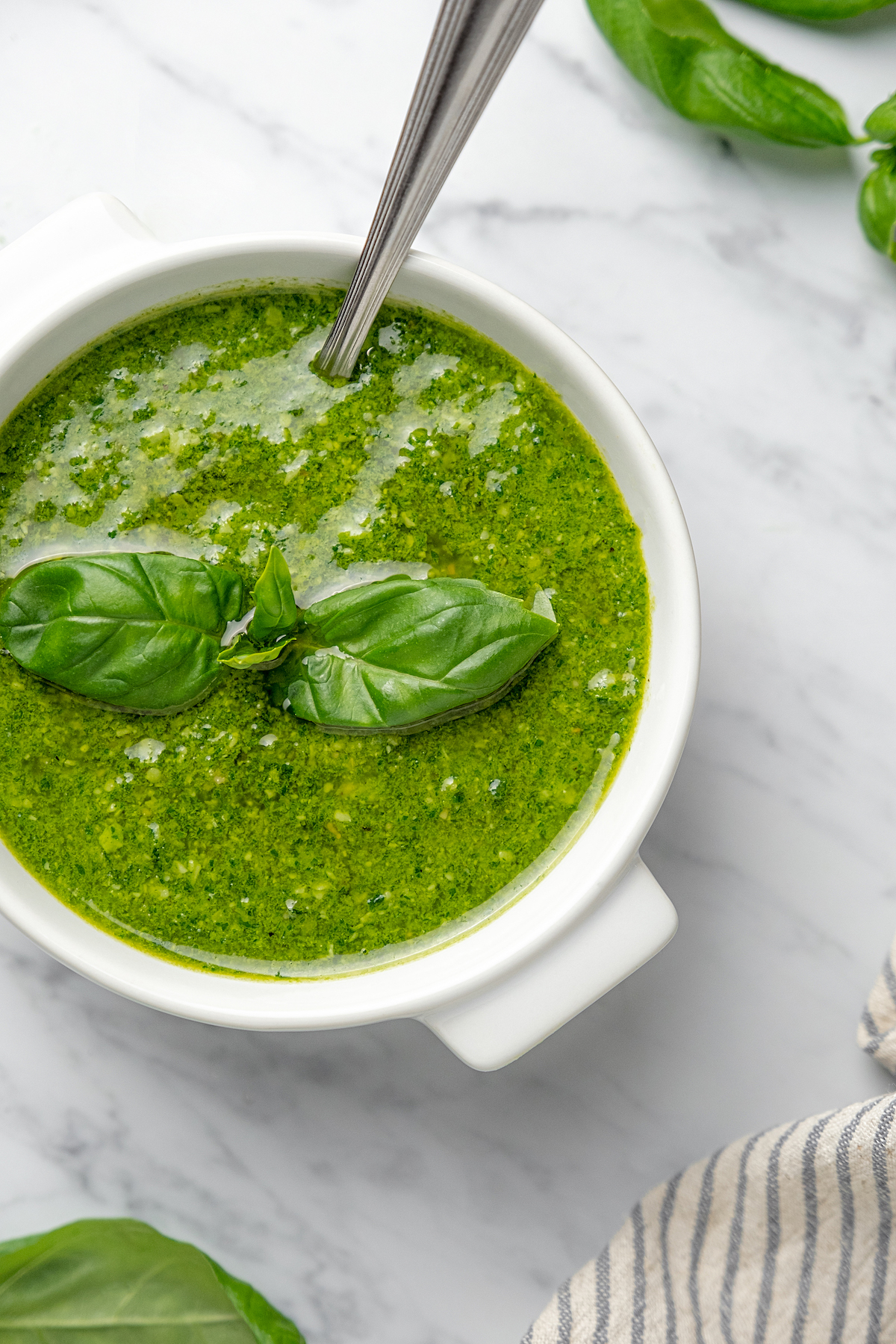
How to Make This Basil Pesto Recipe
Another fun fact? Pesto doesn’t have to be cooked! That’s one reason that this condiment is so refreshing. It’s a totally raw recipe that couldn’t be easier to make.
- Grind Up the Garlic and Pine Nuts. Place the garlic and pine nuts in your food processor, along with a sprinkle of salt and pepper. Pulse these ingredients until they’re finely chopped.
- Add the Basil and Parmesan. Next, pile the basil into the food processor, and add the grated Parmesan as well. Replace the lid, and process until these ingredients are all finely minced.

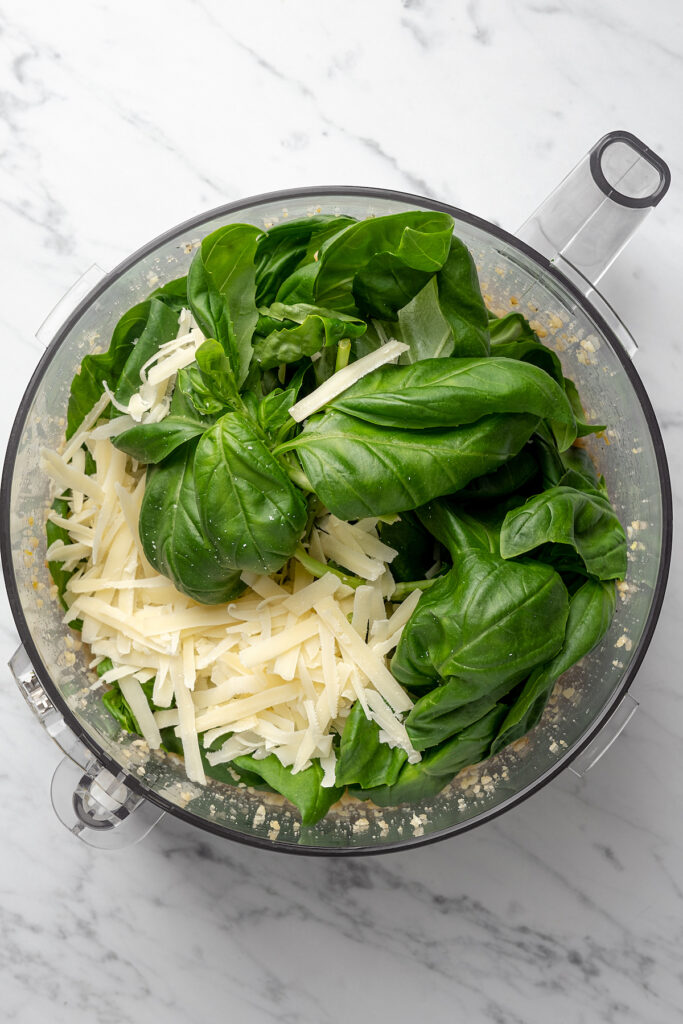
- Drizzle in the Oil. Last, place the lid on the food processor and get your olive oil ready. While the processor is running, drizzle the olive oil through top opening, to make an evenly-blended sauce.
- Enjoy! Serve the pesto, or store it until you’re ready to serve. (See the storing guidelines below for more information on that.)

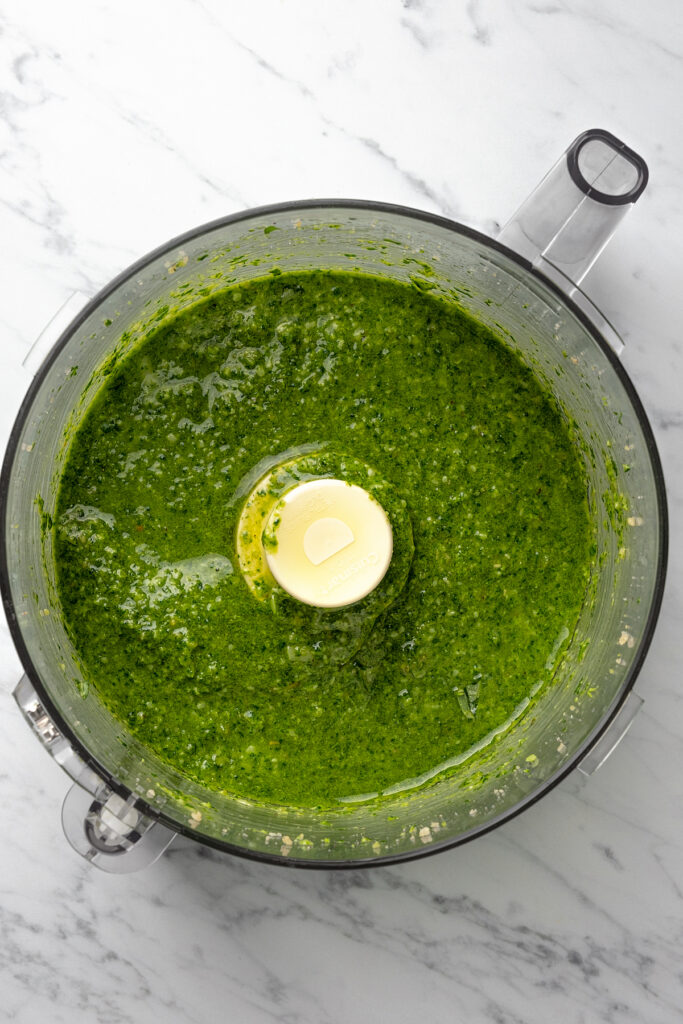
Helpful Recipe Tips
So there you have it! Told you this recipe was easy! But even though it’s so simple, there are still a few helpful tips you should know. Before you start making pesto, check these out.
- Pine Nut Substitutes: You can substitute almost any kind of nut or seed here. Walnuts are a popular choice, as are almonds, sunflower seeds, and even pistachios (yum!). Whichever you choose, try roasting them for a few minutes in a skillet over medium heat. Then cool them down and add to the pesto.
- Nut-Free Pesto: While some people think that the best pesto sauce is made with pine nuts, others like it just as well without any nuts at all! This version is more like a French pistou, especially if you increase the amount of cheese you use.
- Pesto Anytime: Since pesto freezes well, I highly recommend freezing the extras, especially with an ice cube tray! If you have an ice cube tray, fill each well with pesto, and freeze until frozen solid. Then toss the pesto cubes into a freezer bag and keep them in the freezer. You then have individual-sized pesto portions to pop out of the freezer when you need them.

What Do You Eat Pesto With?
Your pesto can be used on pizza, pasta, spooned over a good chicken dish, or added to a tomato and mozzarella salad. Those ideas are just for starters! You can also serve it with…
- Steak: Any steak is great with this garlicky sauce, but I especially like it with Stuffed Baked Steak. It’s sort of like a lighter bracciole.
- Soup: Elevate almost any soup with a drizzle of pesto on top. This Creamy Broccoli White Bean Soup is a perfect choice.
- Grilled Veggies: Nothing could be better than a Grilled Vegetable Plate with basil pesto for dipping.
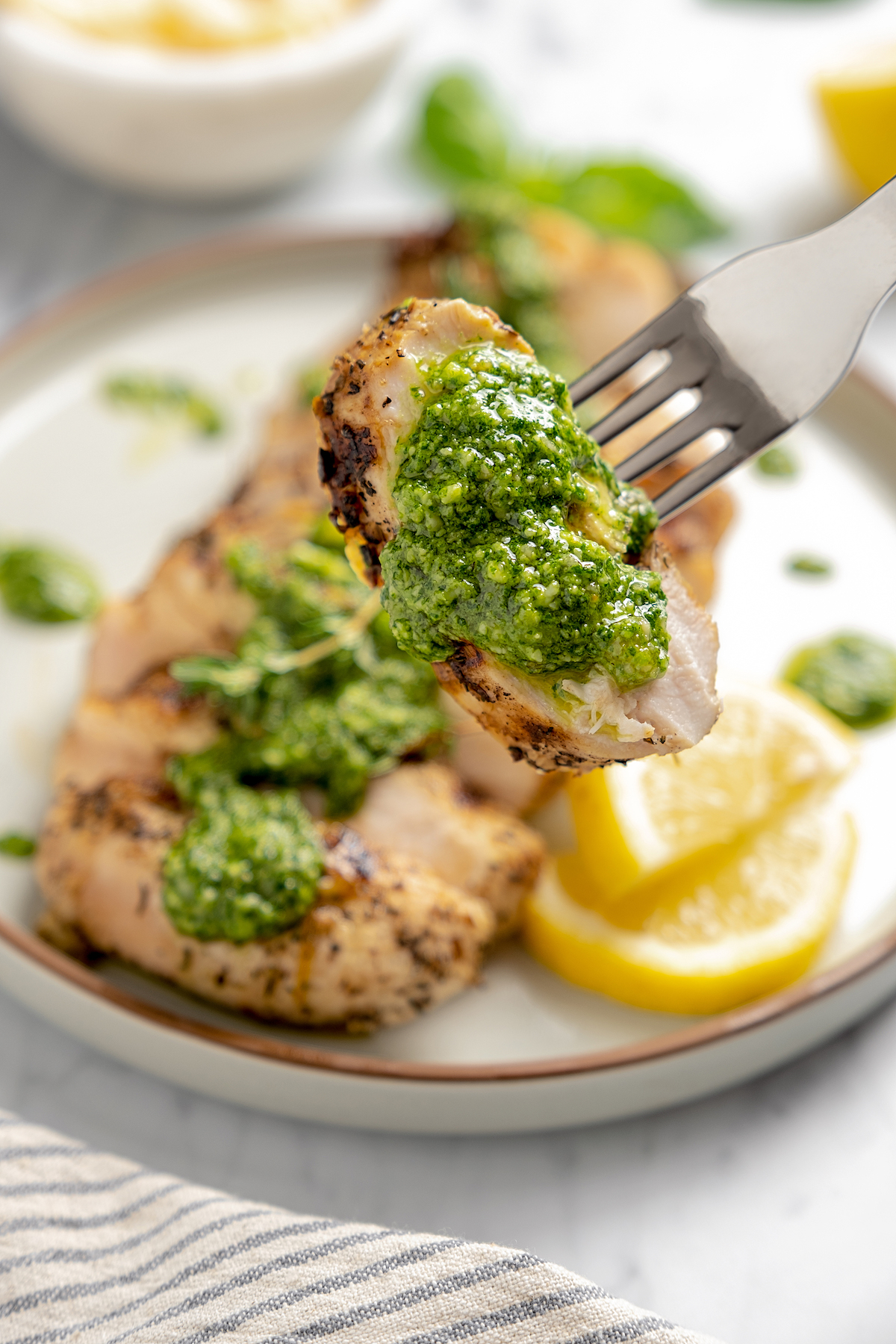
Storing and Freezing
Basil is easy to store. I like to keep mine in a jar, but any airtight container is fine. Store unused pesto in the refrigerator for up to a week, or in the freezer for several months. Pouring a small layer of olive oil over the top of the pesto can help seal out air and keep the basil extra fresh.
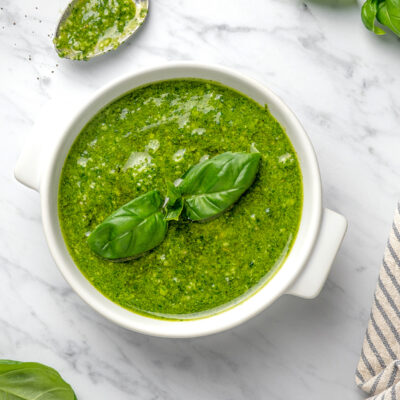
Basil Pesto Recipe
Ingredients
- 2 cups fresh basil leaves washed and dried
- 3 small garlic cloves peeled
- 1/4 cup pine nuts
- 1/2 cup grated Parmesan
- generous pinch of kosher salt and pepper
- 1/2 cup extra virgin olive oil
Instructions
- Add garlic, pine nuts and salt and pepper to food processor and pulse until finely chopped.
- Add basil and parmesan and process again until minced.
- While processor is running feed olive oil through top tube.
Notes
Any unused can be stored in the refrigerator for a week or in the freezer for several months. If you have an ice cube tray, fill with pesto and freeze. You then have individual sized pestos to pop out of the freezer when you need them.
Categories:
More Great Sauces and Condiments

